#Business Finance Assignment Help Service
Explore tagged Tumblr posts
Text
Empowering Students to Excel: Strategies for Mastering Business Finance Assignments

Navigating the intricacies of business finance assignments can be a challenging task for students pursuing courses in finance. The intricate concepts, mathematical complexities, and real-world applications often leave students grappling for assistance. Recognizing this need, platforms like FinanceAssignmentHelp.com step in to provide invaluable support, ensuring that students not only complete their assignments but also master the subject matter. Whether it's comprehending assignment requirements, mastering key concepts, or seeking clarification on complex topics, FinanceAssignmentHelp.com is dedicated to offering Help With Business Finance Assignment. In this blog, we'll explore effective strategies for excelling in business finance assignments and highlight the features of FinanceAssignmentHelp.com that make it a go-to resource for students seeking academic support.
Understanding the Assignment Requirements:
One of the initial challenges students face is comprehending the assignment requirements. It's crucial to carefully read and understand what is expected. Break down the instructions, identify key concepts, and create a roadmap for your work. If uncertainties persist, seeking clarification from professors or utilizing online resources like FinanceAssignmentHelp.com can provide the necessary clarity.
Mastering Key Concepts:
Business finance assignments often involve intricate concepts and formulas. Mastering these is essential for producing high-quality assignments. Make use of textbooks, lecture notes, and supplementary materials to reinforce your understanding. Online platforms like FinanceAssignmentHelp.com offer comprehensive resources, including explanatory videos, case studies, and practice problems, facilitating a deeper understanding of complex topics.
Utilizing Online Resources:
The internet has become a treasure trove of information for students. Websites like FinanceAssignmentHelp.com offer specialized assistance tailored to business finance assignments. These platforms provide not only solutions but also explanations, ensuring that students grasp the underlying principles. FinanceAssignmentHelp.com stands out with its user-friendly interface, making navigation seamless for students seeking specific help with business finance assignments.
Features of FinanceAssignmentHelp.com:
a. Expert Tutors: FinanceAssignmentHelp.com boasts a team of experienced tutors with profound knowledge of business finance. These experts are well-versed in academic requirements and industry practices, providing students with the guidance needed to excel in their assignments.
b. 24/7 Availability: Recognizing the unpredictable nature of student schedules, FinanceAssignmentHelp.com ensures round-the-clock availability. This feature allows students to seek help whenever they encounter challenges, promoting a stress-free and efficient learning experience.
c. Customized Solutions: Each student is unique, and their learning needs vary. FinanceAssignmentHelp.com understands this diversity and offers customized solutions to address individual requirements. This tailored approach enhances the effectiveness of the assistance provided.
d. Plagiarism-Free Content: Academic integrity is paramount. FinanceAssignmentHelp.com prioritizes the delivery of original content, ensuring that students receive solutions that are free from plagiarism. This commitment to authenticity strengthens the educational value of the provided assistance.
e. Timely Delivery: Meeting deadlines is crucial in the academic realm. FinanceAssignmentHelp.com emphasizes the importance of timely delivery, allowing students to submit their assignments punctually without compromising on quality.
Practice, Practice, Practice:
Mastery comes with practice. Once the theoretical concepts are understood, it's imperative to apply them through practical problem-solving. Platforms like FinanceAssignmentHelp.com offer a plethora of practice problems and case studies that enable students to reinforce their learning by tackling real-world scenarios.
Collaborative Learning:
Engage in collaborative learning by forming study groups or participating in online forums. Discussing concepts with peers not only provides different perspectives but also reinforces your understanding. FinanceAssignmentHelp.com encourages collaborative learning through discussion forums where students can interact with tutors and peers, fostering a supportive academic community.
Feedback and Revision:
Submitting assignments is not the end; it's a step in an ongoing learning process. Pay attention to feedback provided by professors or online tutors. Use this feedback constructively to identify areas of improvement and revise your approach accordingly. FinanceAssignmentHelp.com facilitates this process by offering feedback on submitted assignments, guiding students toward continuous improvement.
Conclusion:
Mastering business finance assignments is a journey that demands dedication, understanding, and strategic utilization of available resources. FinanceAssignmentHelp.com stands as a beacon for students navigating this journey, offering expert guidance, customized solutions, and a commitment to academic excellence. By implementing the strategies discussed and leveraging the features of platforms like FinanceAssignmentHelp.com, students can empower themselves to not only excel in their assignments but also develop a profound understanding of the fascinating world of business finance.
#Business Finance Assignment Help#Help With Business Finance Assignment#Online Business Finance Assignment Help#Business Finance Assignment Help Service
8 notes
·
View notes
Text
GAAP vs IFRS
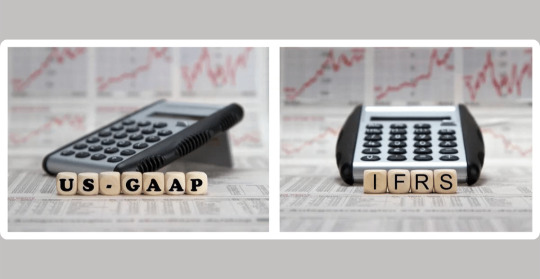
Decoding US Accounting Rules: GAAP vs IFRS | Expert Insights in 2024
Navigate the GAAP vs IFRS debate in US Accounting effortlessly. Gain expert insights, make sense of regulations. Your guide to financial clarity.
The evolving landscape of accounting standards unfolds a nuanced debate between the Generally Accepted Accounting Principles and the International Financial Reporting Standards. These two frameworks, while sharing a common goal of transparent financial reporting, diverge in their approaches, giving rise to a multifaceted discourse with far-reaching implications for the financial world.
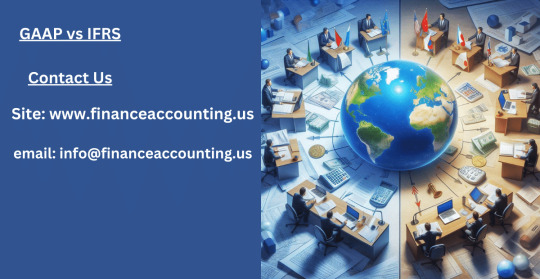
1. Introduction
The evolution of accounting standards has witnessed the crystallization of two dominant frameworks – General Accounting Accepted Principles and International Financial Reporting Standards. In the labyrinth of financial reporting, companies grapple with choosing between these standards, each with its unique history, principles, and global relevance. The debate surrounding GAAP vs IFRS is not a mere academic exercise but a pivotal consideration with implications for investment decisions, legal compliance, and the global financial landscape.
1.1. Evolution of Accounting Standards
The journey of accounting standards traces back to the aftermath of the 1929 stock market crash when the need for standardized, transparent financial reporting became glaringly apparent. What emerged were the General Accounting Accepted Principles, designed to restore investor confidence by providing a reliable framework for financial statements. Over time, GAAP has become deeply embedded in the U.S. financial system, shaping the way companies communicate their financial health.
On the global stage, the International Financial Reporting Standards evolved as a response to the growing interconnectedness of economies. The International Accounting Standards Board (IASB) took the reins in developing IFRS, aiming for a standardized global language of financial reporting. This set the stage for a two-pronged approach to financial reporting standards – General Accounting Accepted Principles dominating in the U.S. and International Financial Reporting Standards gaining traction internationally.
1.2. The Crucial Role of GAAP and IFRS
GAAP stands as the bedrock of accounting standards in the United States, overseen by the Financial Accounting Standards Board (FASB). Its principles, rooted in historical cost, revenue recognition, and matching, provide stability and a familiar structure for U.S. businesses. On the other hand, IFRS, under the stewardship of the IASB, operates as a global player, emphasizing fair value, substance over form, and materiality.
The significance of General Accounting Accepted Principles lies in its historical context and its alignment with the unique needs of the U.S. business environment. Its principles have served as a guiding light for American companies, offering a consistent framework for financial reporting. International Financial Reporting Standards, with its global perspective, caters to the interconnectedness of today’s businesses, providing a common language for multinational corporations.
1.3. Navigating the GAAP vs IFRS Dilemma
The choice between General Accounting Accepted Principles and International Financial Reporting Standards is not a one-size-fits-all decision. Companies grapple with a complex decision-making process, considering factors such as their geographical reach, industry nuances, and investor preferences. This debate is not isolated to boardrooms; it resonates in financial markets, legal proceedings, and regulatory landscapes, shaping the very fabric of financial reporting practices.
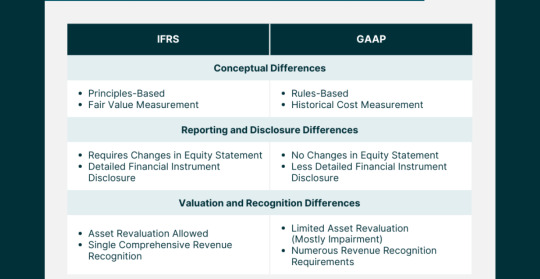
2. Understanding GAAP
2.1. The Foundation of GAAP
a. Historical Roots and Evolution
GAAP’s roots delve deep into the need for a standardized accounting framework post the 1929 stock market crash. FASB emerged as a response to the chaos that ensued, charged with the responsibility of establishing and improving financial accounting and reporting standards. The journey of GAAP has been one of continuous evolution, adapting to the changing business landscape and regulatory requirements.
b. FASB’s Ongoing Influence
The Financial Accounting Standards Board (FASB) stands as the guardian of GAAP, playing a pivotal role in setting and refining accounting standards. FASB’s mission goes beyond rule-making; it seeks to improve financial reporting, providing transparency and relevance in financial statements. The ongoing influence of FASB ensures that GAAP remains adaptive and responsive to the dynamic nature of business transactions.
2.2. Core Principles Anchoring GAAP
a. Embracing the Historical Cost Principle
One of the cornerstones of GAAP is the historical cost principle, dictating that assets should be recorded at their original cost. This principle provides stability and reliability in financial statements, allowing users to assess the financial health of a company based on the actual cost of its assets at the time of acquisition. While critics argue that this approach may not reflect current market values, proponents emphasize the prudence and consistency it offers.
b. Revenue Recognition as a Cornerstone
GAAP’s approach to revenue recognition centers on the realization and earned criteria. Revenue is recognized when it is realized or realizable and earned. This conservative approach ensures that revenue is not prematurely recognized, aligning with the matching principle. While this method may defer recognizing revenue until later stages in the sales cycle, it safeguards against potential overstatement and presents a cautious picture to investors.
c. The Significance of the Matching Principle
The matching principle is a guiding force in GAAP, emphasizing the alignment of expenses with the revenue they generate. This principle ensures that the costs associated with generating revenue are recognized in the same period as the revenue itself, presenting a more accurate portrayal of a company’s profitability. While adhering to the matching principle might result in lower reported profits during high-revenue periods, it provides a more realistic long-term view.
2.3. Scrutinizing Criticisms and Recognizing Limitations
a. Rigidity vs. Stability
One common criticism leveled against GAAP is its perceived rigidity, particularly regarding the historical cost principle. Critics argue that this approach may not capture the true economic value of assets, especially in industries with rapidly changing market conditions. However, proponents assert that this rigidity provides stability and consistency, allowing for easier comparison across periods and industries.
b. The Balancing Act of Revenue Recognition
The conservative approach to revenue recognition in GAAP has faced scrutiny for potentially understating a company’s immediate financial performance. Critics argue that this caution may not be reflective of a company’s true economic position, especially in industries where revenue realization is instantaneous. However, the balancing act lies in mitigating the risk of premature revenue recognition, ensuring financial statements maintain integrity and accuracy.
c. Challenges in Adhering to the Matching Principle
While the matching principle aligns expenses with revenue, critics contend that it introduces complexities in determining the direct association between costs and specific revenue streams. This challenge becomes more pronounced in industries with diverse revenue sources. Despite these challenges, adhering to the matching principle remains integral in presenting a holistic view of a company’s financial health, helping investors make informed decisions.
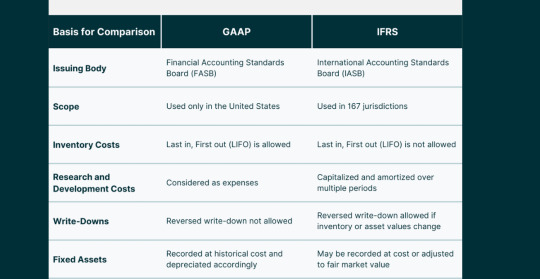
3. Embracing IFRS
3.1. IFRS: A Global Framework
a. The Rise of International Financial Reporting Standards
The emergence of IFRS marks a significant shift towards a globalized approach to financial reporting. As businesses expanded internationally, the need for a common accounting language became evident. IFRS, under the stewardship of the International Accounting Standards Board (IASB), rose to prominence as a framework that transcends borders, providing a standardized set of principles for companies operating on the world stage.
b. IASB’s Pivotal Role in Shaping IFRS
The International Accounting Standards Board (IASB) shoulders the responsibility of developing and maintaining IFRS. Unlike GAAP, IFRS operates under a principles-based approach, focusing on broad principles rather than detailed rules. This flexibility allows for easier adaptation to diverse business environments, making IFRS an attractive choice for multinational corporations seeking a harmonized approach to financial reporting.
3.2. Unpacking Core Principles of IFRS
a. Fair Value Measurement: A Paradigm Shift
One of the fundamental differences between GAAP and IFRS lies in the approach to asset valuation. While GAAP predominantly adheres to the historical cost principle, IFRS leans towards fair value measurement. Fair value reflects the current market value of assets, providing a more dynamic and responsive perspective. Critics argue that fair value introduces volatility, but proponents emphasize its relevance in capturing real-time economic conditions.
b. Substance Over Form: Emphasizing Economic Reality
In IFRS, the substance of transactions takes precedence over their legal form. This principle ensures that financial statements reflect the economic reality of transactions, promoting transparency and accuracy. While this approach aligns with the overarching goal of providing relevant information to users, it requires careful judgment and interpretation, potentially introducing subjectivity in financial reporting.
c. Materiality’s Role in Flexibility
IFRS introduces greater flexibility in materiality judgments compared to GAAP. Materiality refers to the threshold at which information becomes relevant to users. The more flexible stance in IFRS allows entities to exercise judgment in determining what information is material, considering both quantitative and qualitative factors. This flexibility, while enhancing the adaptability of IFRS, also raises concerns about potential inconsistencies in financial reporting.
3.3. Weighing Advantages and Drawbacks
a. IFRS Flexibility: A Double-Edged Sword
The flexibility embedded in IFRS is both its strength and weakness. Proponents argue that this adaptability makes IFRS suitable for diverse business environments, allowing for easier integration with various industries and legal systems. However, critics contend that this very flexibility can lead to inconsistencies and a lack of comparability, challenging the reliability of financial statements for investors and stakeholders.
b. Global Appeal vs. Application Challenges
The global nature of IFRS makes it an attractive choice for multinational companies aiming for consistency in financial reporting across borders. The common language of IFRS facilitates international transactions and fosters a seamless global financial landscape. However, the application of IFRS can pose challenges in jurisdictions with varying legal and regulatory frameworks, potentially leading to complexities in implementation and interpretation.

4. Key Differences Between GAAP and IFRS
4.1. Delving into Variances
a. Revenue Recognition: The GAAP-IFRS Divergence
One of the pivotal differences between GAAP and IFRS lies in the recognition of revenue. While both frameworks aim to depict the economic reality of transactions, their approaches diverge in certain key aspects. GAAP tends to be more prescriptive, providing specific guidelines for various industries, whereas IFRS adopts a broader principles-based approach, allowing entities more room for interpretation.
b. Inventory Valuation: Differing Approaches
The treatment of inventory valuation varies significantly between GAAP and IFRS. GAAP typically follows a specific set of rules for valuing inventory, such as the Last In, First Out (LIFO) or First In, First Out (FIFO) methods. In contrast, IFRS permits the use of various methods, including FIFO and weighted average, offering companies more flexibility in choosing an approach that aligns with their specific business dynamics
c. Consolidation Methods: Navigating Complexity
Consolidation methods, particularly in the context of subsidiaries and investments, showcase differences between GAAP and IFRS. GAAP often employs a more rule-based approach, specifying conditions for consolidation. In contrast, IFRS focuses on a principles-based approach, considering the substance of relationships rather than relying on rigid criteria. This variance introduces nuances in financial reporting, influencing how companies present their financial position and performance.
4.2. The Impact on Financial Statements
a. Shaping Investor Perception
The differences in revenue recognition, inventory valuation, and consolidation methods contribute to variations in financial statements produced under GAAP and IFRS. Investors, as key stakeholders, must navigate these differences to gain an accurate understanding of a company’s financial health. The choice between GAAP and IFRS significantly shapes investor perception, influencing investment decisions and risk assessments.
b. Decision-Making Dynamics
Companies, in choosing between GAAP and IFRS, must consider the implications on decision-making dynamics. The framework adopted affects how financial information is presented, potentially influencing strategic decisions, mergers and acquisitions, and capital-raising activities. Understanding the impact of these frameworks on decision-making is crucial for entities operating in dynamic and competitive business environments.
4.3. Global Adoption Trends: A Comparative Analysis
The adoption trends of GAAP and IFRS provide insights into the global dynamics of financial reporting standards. While GAAP maintains dominance within the United States, IFRS has gained traction in numerous jurisdictions worldwide. Understanding the factors influencing these trends, such as regulatory requirements, investor preferences, and global market integration, sheds light on the evolving landscape of accounting standards.
“Accounting isn’t just about profits and losses; it’s about sculpting the financial soul of a company.” Michael Johnson

5. The Evolution of Accounting Standards
5.1. GAAP’s Historical Odyssey
a. Post-1929: A Catalyst for Change
The stock market crash of 1929 served as a catalyst for rethinking the approach to financial reporting. The chaos that ensued prompted the establishment of standardized accounting principles, laying the foundation for what would later become GAAP. The primary goal was to restore investor confidence by providing a reliable framework for financial statements, reducing uncertainty and fostering stability in financial markets.
b. Amendments and Updates: Shaping GAAP’s Trajectory
GAAP’s journey has not been static; it has evolved through amendments and updates to address emerging challenges and align with changing business dynamics. The Financial Accounting Standards Board (FASB) plays a pivotal role in shaping GAAP, ensuring that it remains relevant, transparent, and responsive to the needs of companies and investors. The ongoing commitment to refinement reflects a dedication to maintaining the integrity of financial reporting.
5.2. Internationalization Efforts
a. Pioneering Attempts at Global Standardization
As globalization gained momentum, so did the recognition of the need for global accounting standards. Efforts were made to align U.S. GAAP with international standards, but achieving a universal standard proved challenging. The push for global standardization gained traction with the rise of IFRS, offering a framework that transcends national boundaries and facilitates consistency in financial reporting for multinational corporations.
b. The Challenge of Aligning U.S. Standards Globally
While the concept of global accounting standards gained support, aligning U.S. GAAP with international standards presented formidable challenges. The unique legal, regulatory, and cultural landscape in the United States posed hurdles to seamless integration. Despite these challenges, the pursuit of convergence and harmonization continued, reflecting the recognition of the interconnectedness of global economies.
5.3. Convergence Initiatives
a. The Ongoing Pursuit of Harmonization
Convergence initiatives aimed at harmonizing GAAP and IFRS gained prominence in the early 21st century. The objective was to reduce disparities between the two frameworks, fostering a more standardized global approach to financial reporting. While full convergence remained elusive, progress was made in aligning specific standards, reflecting a commitment to minimizing inconsistencies and facilitating ease of comparison for investors and stakeholders.
b. Prospects and Hurdles in a Unified Global Standard
The prospects of a unified global accounting standard remain a tantalizing goal, promising enhanced comparability and consistency in financial reporting. However, hurdles such as divergent national interests, legal complexities, and varying levels of standard-setting infrastructure continue to challenge the realization of this vision. Navigating these obstacles requires ongoing collaboration and a commitment to the overarching goal of global financial transparency.
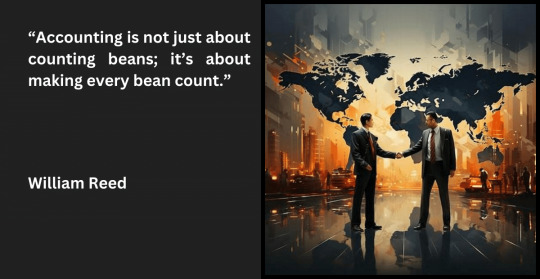
6. Regulatory Bodies Influencing GAAP
6.1. FASB’s Pivotal Role
a. GAAP’s Guardian: The FASB Mandate
The Financial Accounting Standards Board (FASB) stands as the guardian of GAAP, wielding influence over the development and refinement of accounting standards. FASB’s mandate goes beyond rule-making; it encompasses a commitment to improving financial reporting, ensuring that standards are not only relevant but also responsive to the evolving needs of businesses and investors.
b. FASB’s Mission in Financial Reporting Improvement
FASB’s mission revolves around the improvement of financial reporting through the development of high-quality accounting standards. The board operates under a due process system, seeking input from various stakeholders, including investors, auditors, and preparers of financial statements. This collaborative approach ensures that GAAP remains a robust and adaptive framework that reflects the intricacies of modern business transactions.
6.2. SEC’s Watchful Eye
a. SEC’s Authority in Recognizing GAAP Standards
The Securities and Exchange Commission (SEC) plays a crucial role in the oversight of financial reporting in the United States. While the FASB sets accounting standards, the SEC has the authority to recognize and prescribe the principles used in the preparation of financial statements for publicly traded companies. This dual-layered system ensures a balance between industry expertise and regulatory oversight in shaping GAAP.
b. SEC’s Contributions to Financial Transparency
The SEC’s contributions to financial transparency extend beyond its recognition of GAAP standards. The commission actively engages in rule-making and enforcement to ensure that companies adhere to accounting principles and provide accurate and timely financial information to investors. The synergy between the SEC and FASB reinforces the integrity of financial reporting in the U.S. capital markets.
6.3. AICPA’s Industry Impact
a. AICPA: Nurturing Professional Standards
The American Institute of Certified Public Accountants (AICPA) plays a vital role in shaping professional standards within the accounting industry. While not directly involved in setting GAAP, the AICPA contributes to the development of ethical and professional standards that guide the conduct of accountants. This commitment to excellence enhances the credibility of financial reporting, reinforcing the trust that stakeholders place in GAAP.
b. Industry-Wide Compliance through AICPA Guidance
The AICPA’s influence extends beyond standards development to encompass industry-wide compliance. The organization provides guidance on best practices, ethical considerations, and emerging issues within the accounting profession. This guidance ensures a cohesive and ethical approach to financial reporting, aligning with the principles embedded in GAAP and contributing to the overall reliability of financial statements.
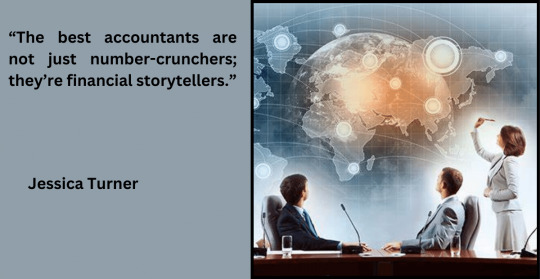
7. International Bodies Shaping IFRS
7.1. IASB’s Global Mandate
a. IASB’s Significance in IFRS Development
The International Accounting Standards Board (IASB) holds a central role in the development and maintenance of IFRS. Unlike the FASB’s role in the U.S., the IASB operates on a global scale, aiming to set accounting standards that are applicable and relevant to entities worldwide. The IASB’s commitment to a principles-based approach reflects its recognition of the diverse needs of global businesses.
b. A Global Perspective in Standard Setting
The IASB’s global perspective is intrinsic to its standard-setting process. The board considers input from various regions, industries, and stakeholders, ensuring that IFRS reflects the nuances of international business. The principles-based approach allows for adaptability, catering to the diverse legal, economic, and cultural landscapes in which entities operate globally.
7.2. IFRIC’s Interpretative Role
a. Navigating Grey Areas: IFRIC’s Guidance
The International Financial Reporting Interpretations Committee (IFRIC) plays a crucial role in navigating interpretative challenges within IFRS. Given the principles-based nature of IFRS, grey areas may arise, requiring clarification and guidance. IFRIC addresses these challenges by providing interpretations and guidance, ensuring consistent application of IFRS standards across diverse industries and jurisdictions.
b. Consistent Application of IFRS Standards
Consistency in the application of IFRS standards is paramount to ensuring comparability and reliability in financial reporting. IFRIC’s interpretative role contributes to this objective by offering guidance on ambiguous or complex issues. This commitment to clarity and consistency aligns with the overarching goal of IFRS – to provide a common language for financial reporting that transcends geographical and industry-specific boundaries.
7.3. Monitoring Board’s Oversight
a. Ensuring Independence in Standard Setting
The Monitoring Board plays a crucial oversight role in ensuring the independence and effectiveness of the IFRS Foundation, which houses the IASB. Independence is a cornerstone of credible standard-setting, and the Monitoring Board’s role is to safeguard the integrity of the standard-setting process. This commitment to independence reinforces the trust that global stakeholders place in IFRS as a reliable and unbiased framework.
b. The Role of the Monitoring Board in IFRS Integrity
The Monitoring Board’s vigilance extends beyond independence to the broader integrity of the IFRS framework. By overseeing the activities of the IFRS Foundation and IASB, the Monitoring Board contributes to the credibility of IFRS as a global accounting standard. This oversight ensures that IFRS continues to meet the evolving needs of global financial markets and remains a trusted framework for transparent financial reporting.
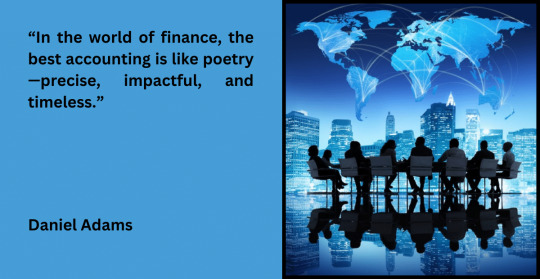
8. Impact on Financial Reporting
8.1. Side-by-Side Comparison
a. Financial Statement Variances: GAAP vs IFRS
A side-by-side comparison of financial statements prepared under GAAP and IFRS reveals variances arising from differences in principles, approaches, and interpretations. These variances extend to revenue recognition, asset valuation, and consolidation methods, influencing the reported financial position and performance of entities. Investors and analysts must navigate these differences to glean accurate insights into a company’s financial health.
b. Interpretation Challenges for Investors
Investors face interpretation challenges when analyzing financial statements prepared under different frameworks. Understanding the nuances of GAAP and IFRS differences is crucial for making informed investment decisions. The ability to discern how specific accounting choices impact financial metrics empowers investors to evaluate risks, assess potential returns, and navigate the complexities of the global investment landscape.
8.2. Revenue Recognition Dynamics
a. The Nuances of Revenue Recognition
The nuances of revenue recognition under GAAP and IFRS reflect the underlying philosophies of each framework. GAAP, with its prescriptive guidelines, provides specific criteria for recognizing revenue in various industries. In contrast, IFRS adopts a broader approach, emphasizing the substance of transactions over rigid rules. Navigating these nuances requires a deep understanding of industry dynamics and the specific requirements of each framework.
b. Implications for Investor Decision-Making
The implications of revenue recognition dynamics extend to investor decision-making. Differences in when and how revenue is recognized can influence perceptions of a company’s immediate financial performance. Investors must factor in these nuances to make informed decisions, considering the impact on key financial metrics such as earnings per share, profit margins, and return on investment.
8.3. Asset Valuation Approaches
a. Valuation Philosophies: Fair Value vs. Historical Cost
The variance in asset valuation philosophies between GAAP and IFRS introduces complexities in financial reporting. GAAP’s adherence to historical cost provides stability and consistency, albeit potentially understating the current market value of assets. In contrast, IFRS’s emphasis on fair value introduces a more dynamic and responsive approach to asset valuation. Companies must navigate the trade-offs between stability and accuracy in presenting their financial position.
b. Balancing Accuracy and Stability in Asset Reporting
Balancing accuracy and stability in asset reporting requires careful consideration of the trade-offs between fair value and historical cost. Companies must weigh the benefits of presenting current market values against the potential volatility introduced by fair value measurements. Striking the right balance ensures that financial statements accurately reflect the economic reality of a company’s assets while providing stakeholders with a stable and reliable foundation for decision-making.
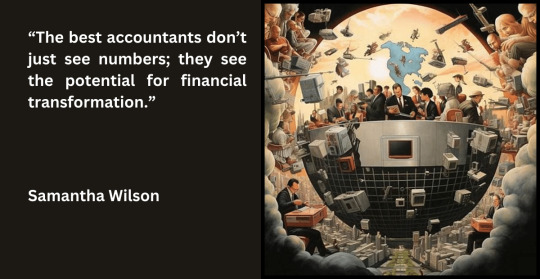
9. Challenges in Adoption
9.1. Corporate Resistance Factors
a. Unpacking Corporate Hesitations
The decision to adopt new accounting standards, whether transitioning from GAAP to IFRS or vice versa, is met with corporate hesitations. Companies fear the potential disruptions, costs, and uncertainties associated with the transition. Understanding these resistance factors is essential for regulatory bodies, standard-setters, and industry stakeholders to develop strategies that facilitate smoother adoptions and ensure widespread compliance.
b. Overcoming Corporate Resistance Challenges
Overcoming corporate resistance challenges requires a multi-faceted approach. Clear communication on the benefits of the new standards, comprehensive training programs, and support mechanisms can alleviate concerns. Regulators and standard-setters must collaborate with industry representatives to address specific challenges faced by different sectors, fostering a cooperative environment conducive to successful adoptions.
9.2. Implementation Costs
a. Financial and Operational Impacts
The implementation of new accounting standards incurs financial and operational impacts for companies. Costs associated with staff training, system upgrades, and adjustments to internal processes contribute to the overall financial burden. Companies must carefully assess these costs and develop comprehensive implementation plans to mitigate disruptions and ensure a seamless transition to the new standards.
b. Strategies for Mitigating Implementation Costs
Strategies for mitigating implementation costs involve proactive planning, phased adoption approaches, and leveraging technology. Companies can benefit from engaging with industry peers that have successfully navigated similar transitions, learning from best practices and challenges. Collaboration between standard-setters, regulatory bodies, and industry associations plays a crucial role in developing strategies that balance the need for improved standards with the practicalities of implementation.
9.3. Training and Skill Gaps
a. The Need for Specialized Training
The adoption of new accounting standards introduces the need for specialized training to ensure that professionals possess the skills required for compliance. Training programs must address the nuances of the new standards, focusing on changes in accounting principles, reporting requirements, and the application of new methodologies. Bridging skill gaps is crucial for maintaining the integrity and accuracy of financial reporting.
b. Collaborative Approaches to Skill Development
Collaborative approaches to skill development involve partnerships between educational institutions, professional organizations, and industry players. The goal is to create comprehensive training programs that equip professionals with the knowledge and skills necessary for successful compliance. Standard-setters and regulators can play a pivotal role in promoting and endorsing such collaborative initiatives, fostering a culture of continuous learning within the accounting profession.

10. Legal Implications for Corporations
10.1. Legal Challenges in GAAP Compliance
a. Litigation Risks in GAAP Adherence
The legal challenges associated with GAAP compliance include litigation risks arising from alleged non-compliance. Companies adhering to GAAP must navigate the complexities of the legal landscape, ensuring that their financial statements withstand scrutiny. Implementing robust internal controls, engaging in transparent communication, and staying abreast of legal developments are essential strategies for mitigating litigation risks.
b. Strategies for Legal Compliance in GAAP
Strategies for legal compliance in GAAP involve proactive measures to minimize litigation risks. This includes fostering a culture of compliance within the organization, conducting regular internal audits, and seeking legal counsel to ensure alignment with evolving regulations. Companies that prioritize legal compliance contribute to the overall stability and trustworthiness of the financial reporting ecosystem.
10.2. Legal Battles in IFRS Adoption
a. Navigating Legal Challenges in IFRS Transition
The transition to IFRS introduces legal battles that companies must navigate effectively. Disputes may arise over interpretations of IFRS standards, potentially leading to litigation. Companies must engage in comprehensive risk assessments, understanding the legal implications of IFRS adoption, and implementing measures to mitigate potential legal challenges.
b. Legal Safeguards for Companies Adopting IFRS
Legal safeguards for companies adopting IFRS involve proactive steps to minimize legal risks. This includes engaging legal experts in the transition process, conducting impact assessments, and implementing robust governance structures. Companies that prioritize legal safeguards position themselves to navigate the complexities of IFRS adoption with resilience and integrity.
10.3. Risk Mitigation Strategies
a. Legal Safeguards: Mitigating Risks in Regulatory Compliance
Legal safeguards play a pivotal role in mitigating risks associated with regulatory compliance. Companies must implement effective risk management strategies, including regular legal audits, compliance training, and a responsive approach to legal developments. A proactive stance towards legal safeguards enhances a company’s ability to navigate the intricate landscape of financial reporting standards.
b. Strategies for Minimizing Legal Challenges in Reporting Standards
Strategies for minimizing legal challenges in reporting standards involve a holistic approach to risk management. This includes collaboration with legal professionals, staying informed about evolving regulations, and fostering a culture of compliance within the organization. Companies that prioritize these strategies not only mitigate legal challenges but also contribute to the overall reliability and credibility of financial reporting standards.
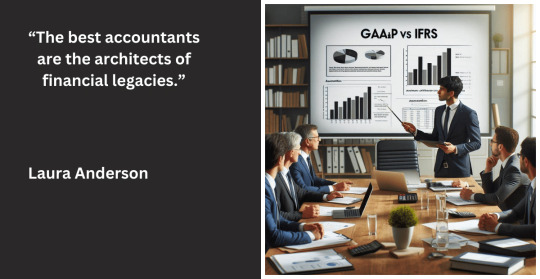
11. Investor Perspectives
11.1. Investor Preferences
a. Surveying Investor Preferences: GAAP or IFRS?
Understanding investor preferences is crucial in the GAAP vs. IFRS discourse. Surveys play a valuable role in gauging investor sentiment and preferences regarding financial reporting standards. The insights gleaned from such surveys inform standard-setters, regulators, and companies in aligning financial reporting practices with investor expectations.
b. Implications of Investor Preferences on Reporting Standards
The implications of investor preferences on reporting standards are far-reaching. Companies that align with investor preferences enhance transparency and communication, fostering trust and confidence. Standard-setters and regulators, informed by investor feedback, can shape standards that not only meet regulatory requirements but also cater to the information needs of investors in a dynamic and competitive market.
11.2. Impact on Investment Decision-Making
a. Investor Decision Dynamics: GAAP vs IFRS
Investor decision dynamics are influenced by the choice between GAAP and IFRS. Differences in financial reporting standards can impact the comparability of financial statements, influencing investment decisions. Investors must consider the implications of these standards on key metrics, risk assessments, and overall financial analysis to make informed and strategic investment decisions.
b. Strategic Impacts on Investment Choices
The strategic impacts of financial reporting standards on investment choices go beyond compliance. Companies that recognize the link between transparent financial reporting and investor confidence gain a strategic advantage. Similarly, investors who factor in the nuances of GAAP and IFRS differences in their decision-making processes navigate the complexities of the investment landscape more effectively.
11.3. Investor Education Initiatives
a. The Imperative of Investor Education
The imperative of investor education underscores the need for initiatives that enhance investor understanding of financial reporting standards. Educational programs, informational resources, and collaborative efforts between financial institutions and regulatory bodies contribute to a more informed investor community. An educated investor base not only demands higher standards of transparency but also actively participates in shaping the future trajectory of financial reporting.
b. Educating Investors on GAAP vs IFRS Implications
Educating investors on GAAP vs. IFRS implications involves demystifying the complexities of these frameworks. Providing accessible information, conducting investor workshops, and leveraging digital platforms for educational outreach are essential components. Investors empowered with a deeper understanding of financial reporting standards contribute to market efficiency and hold companies accountable for transparent and reliable reporting.
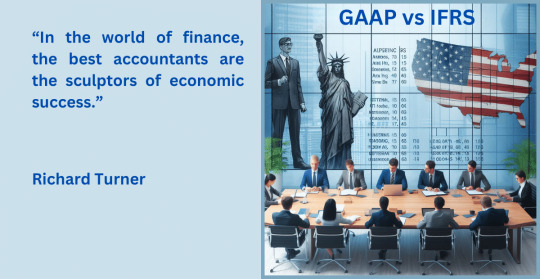
12. Ethical Considerations
12.1. Ethical Dimensions in Financial Reporting
a. Ethics in Financial Reporting Standards
Ethical considerations are integral to the formulation and adherence to financial reporting standards. The principles of integrity, objectivity, and transparency underpin ethical financial reporting. Standard-setters, regulators, and companies must navigate ethical dimensions to ensure that financial reporting serves the interests of investors and the broader public.
b. Upholding Integrity and Objectivity in Reporting
Upholding integrity and objectivity in reporting requires a commitment to ethical conduct. Companies must prioritize accurate representation over short-term gains, fostering a culture that values transparency. Regulators play a crucial role in setting the ethical tone, emphasizing the importance of unbiased and principled financial reporting in maintaining the integrity of capital markets.
12.2. Ethical Challenges for Accountants
a. Common Ethical Dilemmas in GAAP and IFRS
Accountants face common ethical dilemmas in navigating the intricacies of GAAP and IFRS. Issues such as revenue recognition, asset valuation, and disclosure requirements present challenges where ethical considerations intersect with professional responsibilities. Accountants must navigate these dilemmas with a commitment to ethical conduct, considering the broader impact on stakeholders and financial markets.
b. Navigating Ethical Challenges in Reporting Standards
Navigating ethical challenges in reporting standards involves equipping accountants with the tools and guidance needed for principled decision-making. Ongoing professional development, ethical training programs, and mentorship initiatives contribute to a culture of ethical awareness within the accounting profession. Companies, in turn, benefit from the assurance that financial reporting is not only compliant but also aligns with the highest ethical standards.
12.3. Regulatory Measures for Integrity
a. Regulatory Safeguards: Ensuring Ethical Conduct
Regulatory safeguards play a crucial role in ensuring ethical conduct in financial reporting. Regulatory bodies must establish and enforce ethical standards, conduct regular audits, and impose sanctions for non-compliance. A robust regulatory framework promotes integrity in financial reporting, reinforcing public trust in the accuracy and reliability of financial statements.
b. Maintaining the Integrity of Financial Reporting Standards
Maintaining the integrity of financial reporting standards requires a collaborative effort between regulators, standard-setters, and industry stakeholders. Periodic reviews, stakeholder consultations, and responsiveness to emerging ethical challenges contribute to the ongoing refinement of standards. The commitment to upholding ethical principles ensures that financial reporting continues to serve as a cornerstone of trust in the global business landscape.
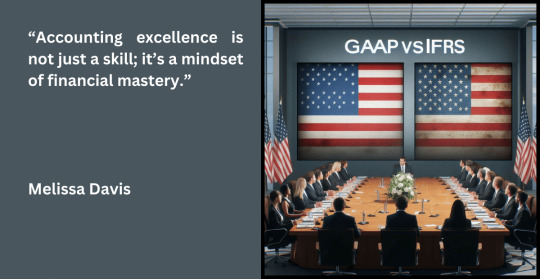
13. Future Trajectories
13.1. The Evolution of Reporting Standards
a. Anticipating Future Changes
Anticipating future changes in reporting standards involves considering the dynamic nature of global business, technological advancements, and shifts in investor expectations. Standard-setters must adopt a forward-looking approach, engaging in scenario planning and staying attuned to emerging trends. The ability to anticipate future changes ensures that reporting standards remain relevant and adaptive to the evolving needs of the business environment.
b. Technological Innovations and Reporting
Technological innovations are poised to shape the future trajectory of reporting standards. The integration of artificial intelligence, blockchain, and data analytics introduces opportunities for enhanced accuracy, efficiency, and transparency in financial reporting. Standard-setters and companies must embrace these innovations responsibly, balancing the benefits of technology with the imperative of maintaining ethical and transparent financial practices.
13.2. Convergence vs. Divergence
a. Assessing Convergence Prospects
The prospects of convergence between GAAP and IFRS continue to be a topic of consideration. While convergence offers the promise of a more standardized global approach, challenges such as differing legal frameworks and regulatory philosophies persist. Assessing convergence prospects involves a nuanced examination of global trends, regulatory developments, and ongoing efforts by standard-setters to bridge divergences.
b. Navigating Divergences in Global Standards
Navigating divergences in global standards requires a pragmatic approach that acknowledges the unique needs of individual jurisdictions. The coexistence of multiple standards necessitates effective communication, education, and cross-border collaboration. Standard-setters can play a pivotal role in facilitating harmonization efforts, fostering a global financial reporting landscape that balances convergence with the flexibility needed to accommodate diverse economic and regulatory environments.
13.3. Sustainable Reporting Paradigms
a. The Rise of Sustainable Reporting
The rise of sustainable reporting reflects a paradigm shift in the broader understanding of corporate performance. Investors, regulators, and the public increasingly recognize the importance of environmental, social, and governance (ESG) factors. Future reporting standards are likely to integrate sustainable reporting paradigms, providing a more comprehensive view of a company’s long-term value creation and societal impact.
b. Integrating ESG Metrics into Reporting Standards
Integrating ESG metrics into reporting standards requires a collaborative effort between standard-setters, regulators, and industry stakeholders. The development of clear guidelines, standardized metrics, and transparent disclosure requirements enhances the credibility of sustainable reporting. Companies embracing ESG considerations in their financial reporting contribute to a more informed and responsible investment landscape.
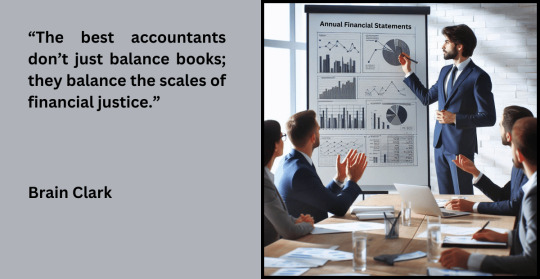
14. Conclusion
Financial reporting standards, whether grounded in GAAP or IFRS, serve as the bedrock of transparency, trust, and accountability in the global business landscape. The evolution of these standards reflects a journey of adaptation to changing business dynamics, regulatory landscapes, and investor expectations. While GAAP and IFRS diverge in certain philosophies and approaches, they share a common goal – to provide reliable and relevant information for decision-making.
As we navigate the complexities of GAAP vs. IFRS, it is imperative to recognize the strengths and limitations of each framework. GAAP, with its historical cost emphasis and rule-based approach, offers stability and comparability. In contrast, IFRS, operating under a principles-based approach, provides flexibility and a global perspective. Understanding the variances in revenue recognition, asset valuation, and consolidation methods is essential for investors, analysts, and companies alike.
Looking ahead, the trajectory of reporting standards involves a delicate balance – between convergence and divergence, between technological innovation and ethical considerations, and between traditional financial metrics and sustainable reporting paradigms. The future holds the promise of more standardized, adaptive, and responsible reporting standards that cater to the diverse needs of a dynamic global economy.
In conclusion, as the landscape of financial reporting continues to evolve, stakeholders must remain vigilant, adaptive, and collaborative. Whether one adheres to GAAP or IFRS, the shared commitment to integrity, transparency, and accountability ensures that financial reporting remains a cornerstone of trust in the interconnected world of business and finance.
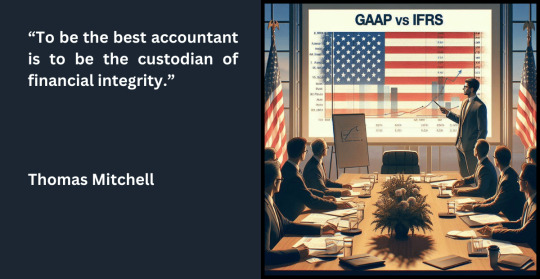
#cfo#banking#accounting#finance#investment#personal finance#international finance assignment help service#financial management#financial markets#financial modeling#financial planning#financial dominance#financial services#financial literacy#financial drain#management#business#entrepreneur
0 notes
Text
Elevate Your Professional Image with COCO Creative Studio's Headshot Photography in Singapore
Gone are the days when you used to picture a friendly (in most cases) headshot of an individual simply because such a course was obligatory. In today’s business environment, accurate headshot photos are playing an important role in the negative space in as much as one wants to impress at the first meeting. Corporate headshots mean a lot in the representation of one’s life, both socially and career-wise, and so it’s a major need for working professionals in Singapore. COCO Creative Studio is one of Singapore's leading photo studios that focuses on headshot photography, helping business people to look appealing, confident and competent. COCO Creative Studio established a quality of performance in providing headshots that are simple photos. This is not content which showcases the personal brand of the individual alone, but rather seeks to marry professionalism required in serving industries such as finance, technology, health care and creative sectors. A focus on leaving no stone unturned in the quality of services offered has propelled the company to emerge as a leading provider of corporate headshot photography in Singapore.
One of the reasons COCO Creative Studio is so good at professional headshot photography is that it always attempts to understand the client’s needs. When it comes to mass company-wide photo-session requiring consistency among all employees photographs or to personal headshots that focus on branding oneself, COCO Creative Studio practices such methods. The professionals work with utmost care to the details of every photo-session. Therefore, the outcome suits the brand or individual in achieving certain objectives.
What is more, the professional photographers of the COCO Creative Studio are very efficient in making the best of any lighting, angle and composition of the subject. They make use of the best technology and care for details in the images to achieve the best in the ocean of images found online. They can be found in various professional contexts, including LinkedIn, company websites, business cards and other advertising. Such pictures are particularly helpful to companies and individuals in improving their image and in impressing their prospects and associates positively.
As it is in an Urban City like Singapore, hardworking professionals may need a good headshot to make a difference in the competitive and active corporate world. Therefore, COCO Creative Studio appreciates this need. Their headshot services include taking pictures limits of the studio, and ad-hoc outdoor photography to meet the requirements of the customer. Their team also makes sure that the person’s skin feels warm and the confidence is seen as it reflects on the images, which are more real and compelling.
One of the unique aspects of COCO Creative Studio’s services is its emphasis on post-production. Careful editing of the image is undertaken such that it is of great importance and meets the highest standards of quality. Whether it’s light retouching which is adding to the picture but not removing the subject’s native overall beauty or changing the intensity and direction of light to the most suitable mood for the image, the union dealing with post-production has it well delivered.

Outside of individual headshots, COCO Creative Studio specialises in external group corporate headshots as well. They have partnered with some leading corporations in Singapore to devise coherent sets of team portraits that match the company’s visual identity. In such assignments, they make sure that every individual’s headshot follows the same style in terms of the background, facial expression, etc to create a perfect cohesive image of the organisation. This level of precision is especially necessary for companies that prefer their clients, partners and investors to see them as organised and sophisticated.
COCO Creative Studio also offers extensive headshot photography services that concentrate mostly on the office environment. Other than this, they also portray professionals working in a creative field, like actors, artists, and musicians, who need images that are more interesting and lively. Be it a plain black-and-white photo of the face or a colourful and artistically fully loaded photo, COCO Creative Studio is ready to work with various clients and make their business portraits effective and corresponding to the individual’s inner world.
COCO Creative Studio is among the top photography studios in Singapore, and it constantly seeks ways to improve the quality of its services. They have several headshot styles for different professions so that every client would go home with a product that complements the brand. It is also loyalty to clean, contemporary, and professional, with a hint of approachability as the coverage centres on the client. This is such a style that many professionals have adapted, especially those who intend to look more assertive, dependable and competent.
Apart from offering corporate headshots for clients, COCO Creative Studio also offers consultations on hair, wardrobe, styling, and the overall concept of the photoshoot. This great deal of assistance is useful, especially to those who may be taking photographs on a professional basis for the first time or those who do not know how to go about it. COCO Creative studio has a team of knowledgeable people who consult with the customers so that they tell them how to get ready for the session: what attitude, what facial expressions, what clothes help convey the message effectively. This guarantees that all the final images will flatter the models as much as is humanly possible.
Moreover, the COCO Creative Studio is highly praised for the completion of the tasks efficiently while still retaining the required standards. The process of engaging professionals is seamless, where a session can be booked and final images obtained in between busy schedules that professionals experience. This is very useful for organisations that have headshots for a large number of employees or for experts who need their images in a short period.
To sum up, headshot photography is no longer an option; rather, it is a need in the present world of work. For the professionals in Singapore, solutions come in from COCO Creative Studio, where there is depth of know-how & commitment to deliver headshot quality. By understanding the requirements of each client, individual or corporate, or in this instance, headshots which enhance personal & corporate brands and evoke a response are produced. Whether you are searching for a standard business headshot, a stunning portrait, or consistent images of your team, gone would be the days when you waste time searching for a headshot photograph in Singapore – sorcery is the answer that has the best edge in headshot photography in Singapore.
Winning accolades and awards, maintaining a contemporary design, and being customer centric have not made COCO Creative Studio complacent. It still remains a trendsetter in headshot photography and enable individuals to improve their status and compete effectively in the modern environment.
Conclusion:
Given how aspirational the professional environment is in Singapore, we cannot underestimate the significance of a headshot. COCO Creative studio delivers high-end head shots professionally with their loyal customers emphasizing the use of the best shots to sell their image professionally. They provide headshot photos that are targeted and appealing by understanding their customers’ needs and using modern approaches to deliver more than just a headshot. COCO creative Studio is still the best place for stunning professional headshot of individuals and corporate teams.
#marketing video Singapore#Corporate video production Singapore#Photographer Singapore#Photography Studio Singapore
2 notes
·
View notes
Text
Your Guide to Choosing the Right AI Tools for Small Business Growth
In state-of-the-art speedy-paced international, synthetic intelligence (AI) has come to be a game-changer for businesses of all sizes, mainly small corporations that need to stay aggressive. AI tools are now not constrained to big establishments; less costly and available answers now empower small groups to improve efficiency, decorate patron experience, and boost revenue.

Best AI tools for improving small business customer experience
Here’s a detailed review of the top 10 AI tools that are ideal for small organizations:
1. ChatGPT by using OpenAI
Category: Customer Support & Content Creation
Why It’s Useful:
ChatGPT is an AI-powered conversational assistant designed to help with customer service, content creation, and more. Small companies can use it to generate product descriptions, blog posts, or respond to purchaser inquiries correctly.
Key Features:
24/7 customer service via AI chatbots.
Easy integration into web sites and apps.
Cost-powerful answers for growing enticing content material.
Use Case: A small e-trade commercial enterprise makes use of ChatGPT to handle FAQs and automate patron queries, decreasing the workload on human personnel.
2. Jasper AI
Category: Content Marketing
Why It’s Useful:
Jasper AI specializes in generating first rate marketing content. It’s ideal for creating blogs, social media posts, advert reproduction, and extra, tailored to your emblem’s voice.
Key Features:
AI-powered writing assistance with customizable tones.
Templates for emails, advertisements, and blogs.
Plagiarism detection and search engine optimization optimization.
Use Case: A small enterprise owner uses Jasper AI to create search engine optimization-pleasant blog content material, enhancing their website's visibility and traffic.
Three. HubSpot CRM
Category: Customer Relationship Management
Why It’s Useful:
HubSpot CRM makes use of AI to streamline purchaser relationship control, making it less difficult to music leads, control income pipelines, and improve consumer retention.
Key Features:
Automated lead scoring and observe-ups.
AI insights for customized purchaser interactions.
Seamless integration with advertising gear.
Use Case: A startup leverages HubSpot CRM to automate email follow-ups, increasing conversion costs without hiring extra staff.
Four. Hootsuite Insights Powered by means of Brandwatch
Category: Social Media Management
Why It’s Useful:
Hootsuite integrates AI-powered social media insights to help small businesses tune tendencies, manipulate engagement, and optimize their social media method.
Key Features:
Real-time social listening and analytics.
AI suggestions for content timing and hashtags.
Competitor evaluation for a competitive aspect.
Use Case: A nearby café uses Hootsuite to agenda posts, tune customer feedback on social media, and analyze trending content material ideas.
Five. QuickBooks Online with AI Integration
Category: Accounting & Finance
Why It’s Useful:
QuickBooks Online automates bookkeeping responsibilities, rate monitoring, and economic reporting using AI, saving small agencies time and reducing mistakes.
Key Features:
Automated categorization of costs.
AI-driven economic insights and forecasting.
Invoice generation and price reminders.
Use Case: A freelance photo designer uses QuickBooks to simplify tax practise and hold tune of assignment-primarily based earnings.
6. Canva Magic Studio
Category: Graphic Design
Why It’s Useful:
Canva Magic Studio is an AI-more advantageous design tool that empowers non-designers to create stunning visuals for marketing, social media, and presentations.
Key Features:
AI-assisted layout guidelines.
One-click background elimination and resizing.
Access to templates, inventory pictures, and videos.
Use Case: A small bakery makes use of Canva Magic Studio to create pleasing Instagram posts and promotional flyers.
7. Grammarly Business
Category: Writing Assistance
Why It’s Useful:
Grammarly Business guarantees that each one written communications, from emails to reviews, are expert and blunders-unfastened. Its AI improves clarity, tone, and engagement.
Key Features:
AI-powered grammar, spelling, and style corrections.
Customizable tone adjustments for branding.
Team collaboration gear.
Use Case: A advertising company makes use of Grammarly Business to make sure consumer proposals and content material are polished and compelling.
Eight. Zapier with AI Automation
Category: Workflow Automation
Why It’s Useful:
Zapier connects apps and automates workflows without coding. It makes use of AI to signify smart integrations, saving time on repetitive tasks.
Key Features:
Automates responsibilities throughout 5,000+ apps.
AI-pushed recommendations for green workflows.
No coding required for setup.
Use Case: A small IT consulting corporation makes use of Zapier to routinely create tasks in their assignment management device every time a brand new lead is captured.
9. Surfer SEO
Category: Search Engine Optimization
Why It’s Useful:
Surfer SEO uses AI to assist small businesses improve their internet site’s seek engine scores thru content material optimization and keyword strategies.
Key Features:
AI-pushed content audit and optimization.
Keyword studies and clustering.
Competitive evaluation equipment.
Use Case: An on-line store uses Surfer search engine marketing to optimize product descriptions and blog posts, increasing organic site visitors.
10. Loom
Category: Video Communication
Why It’s Useful:
Loom lets in small groups to create video messages quick, which are beneficial for group collaboration, client updates, and customer service.
Key Features:
Screen recording with AI-powered editing.
Analytics for viewer engagement.
Cloud garage and smooth sharing hyperlinks.
Use Case: A digital advertising consultant makes use of Loom to offer video tutorials for customers, improving expertise and lowering in-man or woman conferences.
Why Small Businesses Should Embrace AI Tools
Cost Savings: AI automates repetitive duties, reducing the need for extra group of workers.
Efficiency: These equipment streamline operations, saving time and increasing productiveness.
Scalability: AI permits small organizations to manipulate boom with out full-size infrastructure changes.
Improved Customer Experience: From personalized tips to 24/7 help, AI gear help small groups deliver superior customer service.
3 notes
·
View notes
Text

Transform Your Academic Path With Us
In today's fast-paced academic environment, juggling multiple commitments can often leave students overwhelmed. If you've found yourself struggling with your online finance class, fret not – we've got the perfect solution for you. Welcome to TakeMyClassCourse.com, where we specialize in providing top-notch assistance for students seeking to excel in their finance studies. When the challenge of managing your coursework becomes too daunting, our dedicated team is here to make your academic journey smoother. If you've ever wondered, Can someone take my online finance class for me so that I can complete my assignment on time ? – the answer is a resounding yes, and we're here to show you how.
Why Take My Finance Class?
Embarking on a finance course is undoubtedly a demanding task. From complex calculations to in-depth analyses, the coursework often requires a level of dedication that can be difficult to sustain amidst a busy schedule. That's where TakeMyClassCourse.com steps in to alleviate your academic stress. Our team of experienced professionals understands the intricacies of finance, and we are committed to helping you not just pass but excel in your online finance class.
Key Features of Our Services:
Expert Tutors: Our team comprises seasoned finance experts who are well-versed in the nuances of the subject. They bring a wealth of knowledge and experience to the table, ensuring that you receive top-quality assistance throughout your course.
Customized Approach: We recognize that every student is unique, and so are their learning needs. Our services are tailored to meet your specific requirements, ensuring that you receive the support you need to succeed in your finance class.
Timely Submission: We understand the importance of deadlines in the academic world. With TakeMyClassCourse.com, you can rest assured that your assignments and projects will be submitted promptly, giving you the peace of mind to focus on other aspects of your academic journey.
Affordable Pricing: Education should be accessible to all, and our pricing reflects that belief. We offer competitive rates without compromising on the quality of our services, making academic assistance within reach for every student.
How to Take My Finance Class with TakeMyClassCourse.com:
Visit our website: Navigate to https://www.takemyclasscourse.com/take-my-online-finance-class/ to explore our services.
Contact Us: Reach out to us through the contact form on our website, and let us know the specifics of your finance class requirements.
Get a Quote: Receive a personalized quote based on the scope of your coursework and the level of assistance you need.
Sit Back and Relax: Once you've enlisted our services, you can focus on other priorities while our experts take care of your finance class.
At TakeMyClassCourse.com, we take pride in being the go-to solution for students facing the challenge of balancing a demanding finance class with their busy lives. Don't let the stress of academia hinder your success – take your finance class with us and unlock the door to a brighter academic future. Remember, when it comes to excelling in finance, we're here to make it possible for you. Take the first step toward success today!
14 notes
·
View notes
Text
Best Business Software Tools in 2024
The right software tools can help increase productivity, draft operations more efficiently and promote company growth in today's high-paced business environment. Whether you are a start-up or an existing enterprise the following business software is necessary to improve different areas of your business.
1. Project Management: ClickUp

It is a feature-laden project manager that lets you handle tasks, projects, and workflows of all types. Its ease of use and user-friendly interface, complimented with diverse dashboards cater to audiences between small teams and large organizations. Task assignments, time tracking, goal setting, and collaboration options allow you to stop hopping between spreadsheets and emails so your projects are complete efficiently.
2. CRM–– Zoho CRM
Zoho CRM — Your Intelligent Customer Relationships Management System. Among other features, it has lead management, sales automation, and analytics to make sales performance improve on a consistent streamline both administrative aspect as well as customer satisfaction. Due to its integration capabilities with other Zoho products, as well as most third-party applications, It has become a flexible option for businesses that are ready to supercharge their customer relationship management.
3. Accounting: Zoho Books

Zoho Books- The Best Accounting Software for Business Owners Invoicing, expense tracking and financial reporting are some of its features. You can also rest assured that your taxes are being handled correctly and always have the latest view of your financial health to help you manage your finances better.
4. HR Management: monday. com HR
It is a complete human resources management software that helps companies to better structure their workforce. This system provides with facilities like employee on boarding, performance tracking, payroll management etc. With the platform's ease of use, UI simplicity, and automation capabilities in HR processes that would otherwise take hours away from key HR initiatives.
5. Payroll: OnPay

OnPay is an excellent payroll software for businesses of all sizes. It is a cloud payroll software for businesses that ensures complete compliance and automation of top-class payroll calculations, tax filings & employee payments. Additionally, OnPay provides HR and benefits management tools, effectively providing a full-fledged employee pay management solution.
6. Point-of-Sale (POS): eHopper
Versatile Point of Sale Software for Businesses Up To Mid-Sized It offers services like Inventory management, sales tracking and customer management. This makes eHopper a perfect choice for businesses that intend to simplify their sales operations using an affordable and intuitive POS system.
7. Inventory Management: Cin7

While there are plenty of other inventory management systems available, Cin7 stands out as one of the most popular options for small to mid-size businesses (SMBs) looking to get their stock levels, orders and supply chain operations under control. These functionalities consist of real-time inventory monitoring, order processing and e-commerce platform integration. With the powerful feature set of Cin7, businesses can keep inventory at an optimal level and fulfill customer demands to the hilt.
8. Website Builder: Weebly
Weebly is the website builder that you can also use to build your site or blog. It has lots of customizable templates, drag-and-drop functionality, and e-commerce ready to go. With Weebly, you can create a professional website even if you are a tech noob and give your business the relevant online visibility it needs.
9. Recruiting: ZipRecruiter

ZipRecruiter: Popular rated job search app for businesses on board. They provide hiring solutions through features like job posting candidates filtering and tracking the application. AI-powered matching from ZipRecruiter surfaces more relevant candidates to businesses faster.
10. VPN: NordVPN
It is a secure, encrypted VPN application that will make sure that you and your business stay safe as you work with the web. It provides features of encrypted connections, threat protection and global server access as well. In this way, It guarantees secure data in companies and privacy on internet.
Conclusion
The business software tools a company uses are very important to increase productivity and power growth. The above-mentioned tools are some of the best & flexible according to the fact which can assist businesses for any sized groups and help them attain their desired objectives. Implementing these tools in your operations can also help speed up processes and lead to higher customer satisfaction, as well as allow you to be on top of the competition.
#business#business growth#innovation#startup#entrepreneur#100 days of productivity#project management#sales#payroll#hr management#hr software#hr services#ai#artificial intelligence#technology#tech#techinnovation
3 notes
·
View notes
Text
Sixteen years ago, software developer Jeremy Vaught created the Twitter handle @music to curate news and share stories about, obviously, music. Tens of thousands of Tweets later, he’d built a following of more than 11 million. Then, last week, Twitter—now rebranded as X—took the handle off him. An email from X, which Vaught posted to the platform, offered him no explanation but told him he could choose one of three other handles: @music123, @musicmusic, or @musiclover. All three were held by other users and so would presumably have to have been taken off them.
“It feels like this would be this forever thing where somebody's got their account taken and they were allowed to go take another one,” Vaught says. "Where would we end up? That'd be crazy."
He has since been assigned @musicfan.
The confiscation is entirely within X’s terms of service. As the company tries to turn itself into an everything app, from music to video to finance, it’s likely it will need to stake a claim to handles related to its new business lines. But unilaterally taking a popular handle off a user could be bad business and another demonstration of how X under Musk is stripping away the things that made Twitter, Twitter.
“I definitely think that it gives pause to building any sort of a brand on there,” Vaught says. "When you can't have any confidence that what you're working on is not just going to be taken away, that's huge."
The platform’s success was built on people, like Vaught, doing the work to build followings and create organic communities around shared interests. Heavy-handed land grabs on top of surging hate speech, shifting policies on verification, and, of course, the dropping of a globally recognized brand in favor of a letter, reinforce the feeling that Twitter is more and more becoming a place catering to a usership of one: Musk himself.
“It seems to me that he wants it to turn into a fanboy platform where people just go agree with him no matter what he says,” says Tim Fullerton, CEO of Fullerton Strategies and former VP of content marketing at WeWork. “There has been just this ongoing attack on the Twitter users that have made Twitter what it is. He doesn't respect the user base.”
Before purchasing Twitter, Musk was a super user of the platform, having tweeted some 19,000 times to an audience that now stands at 152 million. This meant that his experience on the app was likely radically different than that of most users—the average Twitter user has 707 followers, and many have no followers at all. On pre-Musk Twitter, about 80 percent of tweets came from just 10 percent of Twitter’s users.
Verification helped average users figure out who was worth following. Twitter invented the blue check mark (which now exists on other platforms like Instagram and TikTok to indicate a verified user) after the manager for the St. Louis Cardinals baseball team threatened to sue the platform over a parody account. From then onward, it was used to indicate the authentic accounts of public figures such as celebrities, journalists, and politicians, as well as brands or particularly large accounts (like @music).
Verified accounts “were the people who were producing the majority of the content that was driving more people to stay engaged and increasing the number of people who were using Twitter,” says Fullerton.
But to an influencer like Musk, a blue check was a valuable commodity. Who wouldn’t want to pay for it? So in December he launched Twitter Blue as a pay-to-play “verification” program, replacing the previous merit-based system.
It was, Fullerton says, the first step in its erosion of the communities that made it so popular.
According to a report from Similarweb, only 116,000 people signed up for the $8-a-month service in March. Less than 5 percent of the platform’s 300,000 legacy verified accounts have signed on to keep their blue ticks. Of the 444,435 users who signed up for Twitter Blue in its first month, about half have less than 1,000 followers, according to reporting from Mashable.
And for most users, removing verification has done away with a key visual shorthand that allows users to easily discern if the account or information they’re looking at is real. Firing most of the company’s trust and safety staff, the people who made and enforced the company’s policies around hate speech and misinformation, exacerbated the problem and made the platform increasingly unusable as a real-time source of information and news.
This week, Australia’s national broadcaster, ABC, became the latest large news organization to say it was leaving the platform over its “toxicity.”
For advertisers—still the largest source of X’s revenue—the growth of hate speech and misinformation is a major problem. In the first six months of Musk’s ownership, Twitter lost half of its advertising revenue.
Before, verified accounts and organizations were vetted by Twitter staff for authenticity and legitimacy. These accounts could drive conversation about certain topics, even without getting paid. The communities and engagement that they drove was part of what made Twitter attractive to advertisers.
“It's clear [formerly verified users] are not getting the traffic that they once did, because it's just a jumble and that's not what people want to see. They want to see the news. They want to see political people or sports,” says Fullerton. “When the Grammys or the Golden Globes or something like that happens, you're littering the feed with the RFK Jr.’s and all these awful right-wingers who used to be—rightly—banned.”
Musk has tried to entice influencers with a revenue-sharing program, which requires that users be verified to access. But, as Benedict Evans, an analyst and former partner at Andreessen Horowitz, pointed out in a tweet, confiscating the @music handle illustrated “essentially why no creator in their right minds would invest in Twitter’s monetization products.”
Research from Media Matters for America, a nonprofit watchdog group, found that the revenue-sharing program was cutting checks to right-wing conspiracy theorists. One user identified by MMA, Dom Lucre, regularly pushes QAnon conspiracy theories.
In December, shortly after taking over the platform, Musk announced that he would offer amnesty to accounts that had been previously banned from the platform, including right-wing influencers and Andrew Tate, who has been indicted for human trafficking. While these users may not be the ideal community for legacy users of Twitter, Bill Bergman, a lecturer in marketing at the Robins School of Business at the University of Richmond, suggests that perhaps Twitter’s current users are not the ones Musk is seeking to retain or draw in. “I get the impression Musk, with the direction it's going, doesn’t care what Bill Bergman, who has 400 followers, thinks, because Twitter as Bill Bergman knows it doesn’t exist anymore.” But what is coming next (except perhaps an ill-fated super-app) seems unclear.
And while his antics may have hurt Twitter’s brand, Bergman notes that the company is getting consistent if somewhat outsize coverage, a “pretty good” promotional strategy.
“Has he intimidated and upset all of the advertisers? Absolutely. Has he intimidated and upset all of our users that have been with this platform for 20 years? Absolutely,” says Bergman. “But he doesn’t seem to care about that.”
19 notes
·
View notes
Text
Explore the Benefits of Earning an Online Professional Degree at Hawkins University

In today's fast-paced world, the traditional pathways to higher education are evolving, making way for more flexible and accessible options. Online education has emerged as a game-changer, allowing students to pursue their academic and career goals without compromising their personal and professional commitments. Among the various online learning opportunities available, professional degrees stand out for their potential to significantly enhance your career prospects. Hawkins University, a leader in online education, offers a range of professional degree programs designed to equip you with the skills and knowledge needed to excel in your chosen field. In this blog post, we will explore the numerous benefits of earning an online professional degree from Hawkins University.
1. Flexibility to Learn at Your Own Pace
One of the most compelling advantages of earning an online professional degree at Hawkins University is the flexibility it offers. Unlike traditional on-campus programs, online degrees allow you to study at your own pace and on your own schedule. Whether you're a working professional, a parent, or someone with other commitments, Hawkins University's online programs are designed to fit into your busy lifestyle. You can access course materials, participate in discussions, and complete assignments from anywhere in the world, at any time that suits you.
2. Access to High-Quality Education
Hawkins University is committed to providing a high-quality education that rivals that of traditional institutions. The university's online professional degree programs are designed by industry experts and experienced faculty members who bring real-world knowledge into the virtual classroom. The curriculum is regularly updated to reflect the latest trends and advancements in your field, ensuring that you receive a relevant and up-to-date education. Moreover, Hawkins University offers a robust support system, including academic advisors, career counselors, and technical assistance, to help you succeed in your studies.
3. Cost-Effective Education
Pursuing a professional degree can be a significant financial investment, but Hawkins University strives to make education more affordable. Online programs typically eliminate many of the costs associated with on-campus education, such as commuting, housing, and campus fees. Additionally, Hawkins University offers a variety of financial aid options, including scholarships, grants, and payment plans, to help you manage the cost of your education. This makes earning a professional degree more accessible and less burdensome on your finances.
4. Diverse Range of Programs
Hawkins University offers a diverse range of online professional degree programs, catering to various industries and career paths. Whether you're interested in business, healthcare, technology, or education, you can find a program that aligns with your career goals. Each program is designed to provide you with the specialized knowledge and skills required to excel in your chosen field. Additionally, the university's strong network of alumni and industry connections can open doors to new career opportunities and professional growth.
5. Career Advancement Opportunities
Earning an online professional degree from Hawkins University can significantly enhance your career prospects. Many employers value the dedication and self-discipline required to complete an online degree, and the skills you acquire during your studies can set you apart from other candidates. Whether you're looking to advance in your current job, switch careers, or start your own business, a professional degree from Hawkins University can provide you with the credentials and confidence you need to achieve your goals. Furthermore, the university offers career services to assist you in job placement, resume building, and interview preparation.
6. Networking Opportunities
While online education may seem solitary, Hawkins University fosters a strong sense of community among its students and alumni. Through virtual classrooms, discussion forums, and social media groups, you can connect with fellow students, faculty, and industry professionals from around the world. These connections can lead to valuable networking opportunities, collaborations, and lifelong friendships. Hawkins University also hosts webinars, workshops, and events where you can engage with experts in your field and stay informed about industry trends.
7. Personal Growth and Development
Earning a professional degree online is not just about acquiring technical skills; it's also an opportunity for personal growth and development. The process of balancing your studies with other responsibilities teaches you valuable time management, communication, and problem-solving skills. Additionally, the diverse perspectives you encounter in an online learning environment can broaden your understanding of different cultures and viewpoints, making you a more well-rounded individual. Hawkins University is dedicated to helping you grow both professionally and personally, preparing you for the challenges and opportunities that lie ahead.
8. Global Recognition and Accreditation
Hawkins University is recognized globally for its commitment to excellence in education. The university's online professional degree programs are fully accredited, ensuring that your degree is respected by employers and institutions around the world. Accreditation is a mark of quality that guarantees you are receiving an education that meets rigorous academic standards. This recognition can give you a competitive edge in the global job market and increase your earning potential.
9. A Pathway to Lifelong Learning
The journey doesn't end once you earn your degree. Hawkins University encourages lifelong learning and offers a variety of continuing education opportunities to help you stay ahead in your field. Whether you're interested in pursuing advanced certifications, attending workshops, or enrolling in additional degree programs, Hawkins University provides the resources and support you need to continue your education and achieve your career aspirations.
Conclusion
In conclusion, earning an online professional degree from Hawkins University is a smart investment in your future. With flexible learning options, high-quality education, cost-effective programs, and a wide range of career advancement opportunities, Hawkins University is the ideal choice for anyone looking to enhance their skills and achieve their professional goals. If you're ready to take the next step in your career, explore the online professional degree programs at Hawkins University and discover how they can transform your life.
Visit Hawkins University to learn more about the programs and take the first step towards a brighter future.
2 notes
·
View notes
Text
🌟 Online Finance Assignment Help: A Lifesaver for Students! 🌟
Hey everyone! I just had to share my recent experience with Online Finance Assignment Help. As a busy college student, I often find myself struggling to keep up with my coursework, especially when it comes to finance assignments. But this time, I decided to seek some extra help, and boy, was it a game-changer!
📚 Getting Started
I stumbled upon the website FinanceAssignmentHelp.com while searching for assistance with my finance assignment. The moment I landed on their page, I knew I was in good hands. The layout was super user-friendly, and I quickly found the services that were just perfect for my needs.
🌐 Easy Ordering Process
The website's ordering process was a breeze. They had a simple form where I could specify all the details of my assignment, such as the topic, deadline, and any specific requirements. It's worth noting that the process was quick, and I received a quote almost instantly.
💼 Expert Finance Tutors
One of the best things about their service is the team of expert finance tutors. They truly know their stuff! When I received my assignment, I could see the depth of knowledge that went into it. They not only met my requirements but exceeded my expectations.
💯 Timely Delivery
Deadlines can be nerve-wracking, but the team at FinanceAssignmentHelp.com assured me that they'd deliver my assignment on time. And they did just that! My assignment was ready well before the due date, giving me enough time to review it.
💡 Learn and Excel
What's more, the solution provided was not just about getting the job done; it was also an excellent learning resource. I could see how they approached the problems, which helped me understand the concepts better.
🤑 Affordable Pricing
As a student, budget matters a lot, and I was pleasantly surprised by the reasonable pricing. They offer high-quality services at a cost that won't break the bank.
👍 Final Verdict
In a nutshell, Online Finance Assignment Help from FinanceAssignmentHelp.com saved the day for me. If you're a student struggling with finance assignments, I highly recommend giving them a try. It's a game-changer that makes academic life so much easier. Don't hesitate to reach out for assistance, and remember, your success is just a click away! 🚀
So, if you're in a similar situation, make sure to check out FinanceAssignmentHelp.com for Online Finance Assignment Help. You won't regret it! 😉📝📈💰
8 notes
·
View notes
Text

Programming Assignment Writing Help Make it easier with AHECounselling . Best Affordable Online Academic Assignment Writing Help Service From AHECounselling You can get the Top Class Assistance From Expert Writers Of AHECounselling & Submit Your Project With The Best Content. . *Our Best Specialized Subjects* 🔰 Business Studies, 🔰 Management, 🔰 Marketing, 🔰 Accounting, 🔰 Finance, 🔰 Economics, 🔰 Research proposal, 🔰 Thesis statement, 🔰 Literature review, 🔰 Dissertation, 🔰 Programming, 🔰 Psychology, 🔰 Sociology, 🔰 Engineering, 🔰 Project Management, 🔰 Statistics, 🔰 Law, 🔰 History, 🔰 Computer Science, 🔰 Pharmacy, 🔰 Biosciences, 🔰 Nursing, 🔰 Lab reports, 🔰 Financials statement, . We are available 24/7 to help you and to give our 💯%. Visit Here: www.ahecounselling.com E-mail 📧: [email protected] Whatsapp Number: 092148 59550
#ahec#programmingassignment#assignmenthelp#programming#assignment#computerscience#programmingassignmenthelp#machinelearning#homeworkhelp#datascience#coding#programmer#college#python#developer#javascript#technology#code#java#programmingassignments#writingservices#onlineassignment#css#webdevelopment#linux#webdesign#programminglife#php#hacking#pythonprogramming
5 notes
·
View notes
Text

My Permenant Job @ Deloitte was unfairly terminated with immediate effect Within Few Months - Refugee Says!
"I joined #Deloitte as a business support analyst. This was after several years of excitement and several attempts across nearly 5 years to secure a role within their team or any role within my discipline.
Each attempt took me days to practice & seek support to prepare for the process & not to mention the frustration after being unsuccessful.
The role is for school leavers and I have a degree in #Accounting & #Finance from #CardiffMetropolitanUniversity & I am overqualified for the role.
After a few weeks @ Deloitte in #Cardiff office, I held a ten minutes online meeting with #HywelJones just to introduce myself and then I was told to not approach him again at all.
After a few weeks, I realized that someone is unhappy with my presence with the team and start causing indirect disruption to me. The following have been noted during just the first two months:
1- Some of my works were deliberately deleted & I proved to them, I have done the work,
2- Enormous pressure by the team leader, #MeganRelph, and another person U2,
3- Singled me out on a daily basis
4- Provided incorrect instructions
6- Prolonged meeting around 60 minutes for a very basic thing, 60 minutes of repetition for the same thing
7- I was asked to send my completed work to new joiners who were 2 -3 weeks in Deloitte to peer review my work
8- Extremely low or no work were assigned to me and I was actively helping others,
In the end, I realized all the above were set up for dismissing me. One or all of the following three people together set up the #unfairdismissal process: Hywel Jones, Meg Relph, and #JosieHancox.
I received a call from #CatherineParsons states the following:
1-“Deloitte does not have 24/7 support to support you”
2-“You are defensive and do not take feedback on board”
2-“I have my own people I fully trust,
3-“I trust them and what they reflected about you is correct"
4-“I will not discuss anything or do not want to hear anything from you"
I expressed my concerns to a director through the confidential #speakup platform and told her, "No matter what I do, it seems a matter of weeks for my dismissal with full of baseless accusations".
I collected feedback from requesters who I done work for them. One of them wishes to receive the same service from my team next time for her upcoming tasks.
I left no stone unturned to keep myself in the role and provided them with several #mitigatingcircumstances, but could not stop their unfair dismissal.
For those who did not hear about #Deloittevalues on social media before:
Serve with integrity,
Take care of each other,
Foster inclusion,
From my experience, I saw the complete opposite of the above.
For more info email [email protected]
#Insights #deloitteinsights #Sustainability #graduates #workexperience #bigfour #5MF #DiversityAtDeloitte #5MillionFutures #ImpactThatMatters #inclusion #refugees #refugeesincardiff #refugeesinwales #refugeestories #graduates #graduates2021 #graduates2022 #grdautes2023 #graduates2024
#english literature#refugees#Refugeesincardiff#Cardiff#Wales#Deloitte#work experience#reading#Refugeesinwales#deloitteuk#deloittecardiff#graduate
2 notes
·
View notes
Text
Management Assignment Help
A management assignment help course is a curriculum created to assist learners in comprehending the fundamentals of managing companies and organizations. Here is a quick summary, A three-year undergraduate program called the Bachelor of Management Studies (BMS) is aimed to teach students about the analytical elements of business management and to get in-depth information about a number of managerial or business-related topics, including human resource management, economics, marketing, and business analytics. The cost of the course is between 20,000 and 15,000 LPA. Either a merit-based admissions process or an entrance exam are used.

Advanced principles in leadership, decision-making, and corporate ethics are covered in the business management course curriculum. It enables students to become effective managers, leaders, and business owners. There are specializations offered in information technology, economics, sales, and human resource management.
Teaching Method: Students are often required to present, create reports, write essays, finish problem sets, participate in group discussions, and attend lectures, seminars, and courses.
Career Opportunities: With a business leadership degree, you may pursue a wide range of positions in both for-profit and nonprofit businesses that are involved in a wide range of sectors, including sales, healthcare, business, manufacturing, advertising, and finance.
It's vital to remember that depending on the organization giving the course, its specifications may change. For the most up-to-date information, always contact the particular institution.
Why choose us for assignment writing help service?
We only offer the best to students at workingment Assignment Help. Regarding each question, we handle it quite differently. Excellence is the only thing we value. The following is a typical way to respond to the question above:
Utilizing the "Stairway to Criticality" from the best universities, describe the fundamentals of critical assessment
a context-appropriate introduction to a leader or organization
critical implementation of a leadership or management theory with annotations
a concise introduction to the case study and guidance-giving commentary throughout
a list of peer-reviewed journal publications with annotations
Access to chances for training and professional advancement is provided via the management stream. Each and every student studying management should prepare and turn in management assignments. It's never a terrible idea to get a little assistance, such from management assignment services. View these examples of our management assignment writing expert's work that has been solved to learn why it is always a great choice to get management assignment assistance. Our experts on assignments are experts in their respective professions. Workingment.com carefully assesses each expert's academic talents before choosing the greatest assignment helpers in every country. Every student wants to receive the highest mark on their assignments in today's cutthroat society. Specialists with years of expertise make up our team of professionals.
Note: For more scholarship updates join our Telegram Group
#assignment help#assignment services#Management assignment help#Workingment assignment help#Management assignment
2 notes
·
View notes
Text
Earn Money As a Content Writer
Earn Money As a Content Writer
In today's digital era, content is king, and skilled content writers are in high demand. If you have a passion for writing and a way with words, you have an excellent opportunity to earn money as a content writer. Whether you're a seasoned wordsmith or just starting out, the world of content writing offers various avenues for financial success. Let's explore how you can turn your writing skills into a profitable venture. Visit This Website For latest online earning Tips https://www.learningteachs.com/
Freelancing Platforms: One of the most accessible ways to kickstart your content writing career and earn money is by joining freelancing platforms. Websites like Upwork, Fiverr, and Freelancer.com connect writers with clients seeking content for their websites, blogs, social media, and more. Create a compelling profile, showcase your skills, and start bidding on relevant projects to secure paid writing assignments.
Content Mills: Content mills are platforms that connect writers with a constant stream of content requests from clients. Although the pay rates might be lower compared to freelancing platforms, content mills offer a steady flow of work. Websites like Textbroker, WriterAccess, and Constant Content are popular content mills where you can earn money by writing articles, blog posts, product descriptions, and more.
Niche Writing: If you have expertise or a deep interest in a specific field, consider becoming a niche writer. Niche writing involves focusing on a particular industry, such as technology, health, finance, or travel, and providing specialized content for clients within that niche. Establishing yourself as an authority in a specific area allows you to command higher rates and attract clients who value your knowledge.
Guest Blogging: Guest blogging is an excellent way to earn money while building your writing portfolio and gaining exposure. Many websites and blogs accept guest posts and pay writers for their contributions. Research websites within your niche, pitch article ideas, and negotiate payment terms. Guest blogging not only provides a source of income but also helps you establish connections and expand your writing network.
Content Creation for Businesses: Businesses of all sizes require content to promote their products, services, and brand. Approach local businesses, startups, or online companies and offer your content writing services. Create engaging website copy, compelling blog posts, informative case studies, or persuasive marketing materials. Collaborating with businesses not only brings financial rewards but also provides valuable experience and potential long-term partnerships.
Self-Publishing and E-books: If you have a passion for storytelling or expertise in a particular subject, consider self-publishing your own e-books or digital content. Platforms like Amazon Kindle Direct Publishing and Smashwords allow writers to publish and sell their work directly to readers. With effective marketing strategies and well-crafted content, self-publishing can become a profitable venture with a passive income stream.
Conclusion: In the digital age, the demand for quality content is growing exponentially, creating abundant opportunities for content writers to earn money. Whether you choose freelancing platforms, content mills, niche writing, guest blogging, business collaborations, or self-publishing, honing your writing skills and seizing these opportunities can pave the way to financial success as a content writer. Embrace your creativity, deliver exceptional content, and watch your writing career flourish while reaping the rewards of your hard work.
Visit this site for latest earning tips https://www.learningteachs.com/
2 notes
·
View notes
Text
Your Complete Checklist for Smart Financial Planning in 2025

In today’s fast-paced world, managing your finances wisely has never been more important. As we enter 2025, financial planning isn't just about saving a portion of your income—it’s about creating a roadmap for long-term stability and wealth. Whether you're an individual, a growing entrepreneur, or a small business owner, the right strategy can help you meet your financial goals, reduce risk, and prepare for the unexpected.
At Robert Ricco, Inc, An Accountancy Corp, we offer comprehensive accounting services in Santa Monica to help you make informed financial decisions every step of the way. In this guide, you'll find everything you need to build your financial checklist for 2025—from budgeting and debt reduction to investment planning and tax optimization.
Define Your Financial Goals for 2025
Setting clear goals is the foundation of smart financial planning. Begin by categorizing your objectives into three types:
Short-term goals: Emergency fund, debt repayment, vacation
Mid-term goals: Saving for a home, expanding a business
Long-term goals: Retirement planning, college funds for children

Build a Practical Budget
A budget is a financial blueprint that ensures you're spending within your means and allocating money wisely. In 2025, inflation, interest rates, and economic uncertainty may impact everyday expenses—making budgeting even more crucial.
Popular budgeting strategies:
50/30/20 Rule: 50% on needs, 30% on wants, 20% on savings/debt
Zero-based budgeting: Every dollar is assigned a purpose
Use apps like YNAB, Mint, or QuickBooks to track spending
If you own a business or work as a freelancer, our Bookkeeping Services in Santa Monica ensure your financial records are always up-to-date and accurate.
Create a Reliable Emergency Fund
An emergency fund acts as a safety net for unexpected events such as job loss, medical expenses, or urgent repairs. In 2025, aim to save 3–6 months’ worth of essential expenses. Store this fund in a high-yield savings account to earn interest while keeping it accessible.
At Robert Ricco, Inc, our Santa Monica accounting experts can help you automate your savings and develop cash flow strategies to build your emergency reserves.
Strategically Manage Debt
Debt management is essential to maintaining financial freedom. High-interest debt like credit cards or unsecured loans can hinder your progress.
Popular repayment strategies:
Avalanche method: Pay off the highest-interest debt first
Snowball method: Pay off the smallest debts first to build momentum
Our CPA in Santa Monica works closely with clients to review liabilities, assess credit impact, and develop debt payoff plans that align with their income.
Maximize Your Income and Career Potential
Whether you're seeking a promotion, changing careers, or launching a new business, maximizing income in 2025 is vital.
Here’s how to grow your earnings:
Upskill with certifications or online courses
Explore side hustles or part-time consulting
Network and negotiate effectively

Develop a Smart Investment Strategy
Smart investing helps grow your wealth over time. In 2025, trends such as automation, green tech, and global diversification are shaping new opportunities.
Investment areas to consider:
ETFs and mutual funds
Stocks and dividend portfolios
Real estate and REITs
Roth IRAs and 401(k) plans
Our CPA firm Santa Monica CA provides personalized investment planning services to help clients diversify their portfolios based on goals and risk tolerance.
Prepare for Tax Season All Year Long
Proactive tax planning can save you thousands over the long term. With constant changes in tax codes, it's critical to stay up-to-date.
Tax planning tips for 2025:
Maximize deductions and credits (home office, business expenses)
Contribute to tax-advantaged accounts (401(k), HSA, SEP IRA)
Keep detailed records year-round
Let our CPA in Santa Monica manage your filings, minimize liabilities, and ensure full IRS compliance.
Review Insurance Coverage
Protecting your assets and income through insurance is an essential part of financial planning.
Types of insurance to consider:
Health and disability insurance
Life insurance (term or whole)
Home, auto, and renters insurance
We'll help assess your current policies and ensure you're adequately covered for life's unpredictable moments.
Set Up Estate Planning Documents
Estate planning ensures your assets are distributed according to your wishes. It's not just for the wealthy—it's smart financial planning for everyone.
Key documents to have in place:
A legally binding will
Power of attorney
Healthcare proxy
Living trust (if applicable)
Our firm connects you with trusted estate planning professionals to protect your legacy.
Use Technology and Financial Tools
In 2025, digital tools make financial planning more accessible than ever. Whether you're managing a business or household, automation and software streamline decision-making.
Recommended tools:
QuickBooks or Xero for small business finances
Robo-advisors like Betterment for hands-off investing
Personal finance dashboards for budget tracking
At Robert Ricco, Inc, we integrate these tools into our Bookkeeping Services in Santa Monica to give you real-time financial clarity.
Review and Adjust Your Plan Regularly
A successful financial plan is dynamic—not static. We recommend scheduling quarterly or biannual reviews to adjust your budget, savings goals, and investment strategies.
Our clients benefit from regular strategy sessions with a dedicated CPA in Santa Monica, ensuring that their plans evolve with their lives and business goals.
Why Choose Robert Ricco, Inc for Your Financial Planning?
At Robert Ricco, Inc, An Accountancy Corp, we’re more than just number crunchers. We’re a strategic partner in your financial success. With deep expertise in Santa Monica accounting, tax compliance, and investment planning, we help clients build wealth, reduce risk, and meet their financial goals with confidence.
📞 Call Now for Smart Financial Planning (310) 729-3705
👉 Related Blog
Source Page
0 notes
Text
In Russia, you don’t have to look too hard to find “tough guys” offering to help you deal with sensitive issues, whether they be business-related or personal. These men, referred to as “fixers,” are considered to have reached their heyday in the 1990s — but they continue to offer their services in dealings between business partners, embittered exes, or even in matters involving the state. Olesia Ostapchuk, a special correspondent for independent media outlet Holod, dove into the world of Russia’s “fixers,” learning more about their main clients, their work both inside and outside the bounds of the law, and how their profession has changed since the start of Russia’s full-scale invasion of Ukraine. Meduza in English is publishing an abridged translation.
‘Apply a little pressure’
It’s unlikely that anyone who knows 33-year-old Marcel Gasanov was surprised when, in October 2023, police caught him outside of Kaspiy, a notorious cafe known to be a hub for crime bosses in the city of Yekaterinburg. This wasn’t the first time Gasanov had been involved in local criminal affairs: he’d previously served a stint in prison for robbery and received a suspended sentence for possession of firearms. Now, Gasanov works as a “fixer,” according to local media reports.
“Fixers,” as they’re commonly referred to, are hired to resolve a wide variety of issues for which a client either can’t, or doesn’t want to, contact the police or state authorities. While requests most often entail debt collection, they can range from “problems with unruly neighbors, troublesome employees, and unreasonable relatives” to helping those who have been “scammed out of large sums of money by their ‘loved ones’” and even getting people out of cults. “I do the work that others won’t take on,” says one fixer from Vladivostok.
According to Yekaterinburg outlet E1.ru, Marsel Gasanov “doesn’t even wear a mask” when he’s on assignment — he knows he has the support of the authorities. Tellingly, he didn’t face any criminal charges for the incident at Kaspiy or for his involvement in another conflict between rival management companies in February 2022.
Fixers’ services are often publicized on Avito, Russia’s most popular classified ads website. Though Dmitry Krylov’s (name changed) listings on Avito don’t explicitly mention his profession, he offers to “resolve any unusual issues,” “restore justice” and “get back your child, finances, or property.” “We can do anything for money, and for good money, absolutely anything!” reads one ad.
Recently, a worker at an auto repair shop told Krylov about an individual who owes him money, and asked him to “apply a little pressure, you know, give a bit of a nudge.” Krylov receives all sorts of offers — once, a teenager even asked him to “deal with” one of his teachers who had “said too much” to his parents, prompting Krylov to clarify that he doesn’t commit murder.
“We try to do everything within the bounds of the law,” Krylov explains. “Though there are, of course, some exceptional circumstances.”
‘Fixers used to be gangsters, now they’re more likely to be officials in uniform’
In Russia, “fixers” refer to a wide range of individuals — well-connected scammers who have influence over lawmakers, lawyers who can be bribed into ensuring a desired outcome in a criminal case, and those willing to have tough conversations with noisy neighbors.
One researcher says fixers fall into the two following categories: those in the criminal world who collect debts and help squeeze out competitors, or middlemen who know the right people in government and can achieve results faster or without the red tape. The first category is extrajudicial, while the other takes advantage of the law.
“In my understanding, the most important ‘fixers’ are corrupt middlemen who take bribes,” explains one of Holod’s sources. “They’re usually former employees from the police force, law enforcement, the prosecutor’s office, or agencies addressing economic crimes.” “Fixers used to be those gangsters from the 1990s,” the source adds. “Now they’re more likely to be officials in uniform.”
Some fixers lobby for semi-legal or illegal businesses that produce bootleg alcohol, sell counterfeits, provide sex services, or run underground casinos. “They need a person who has influence, so that [the authorities] won’t touch [their] interests, or when they do, it’s coordinated,” explains one insider.
But there’s another group of fixers — those willing to get involved in even the smallest assignments such as “punishing” an unfaithful husband. “It all depends on the amount of money offered,” said one source. “[They will engage in] all kinds of petty crime: torching a car, beating someone up.”
Asked if fixers face punishment or prosecution, one of Holod’s sources said they’re “only jailed when they step out of line.” “Or if they go too far. For example, [if] the person they beat up ends up dying. Or they set fire to a car, and it’s outside the mayor’s house.”
‘Even the state occasionally turns to us’
Andrey Petrov (name changed), a fixer, says people usually come to him for problems related to debts and fraud. But he “carries out delicate assignments” all around the globe — helping locate people, accompanying and transporting cargo. “We have employees in China, in Vietnam,” he says. “There are some who work in Europe, although it’s difficult now.” Petrov says that he’s often enlisted to help people look for someone, given that so many people have now left Russia. “Even the state itself sometimes turns to us instead of to the police,” he adds.
When it comes to requests involving violence, not all fixers abide by the same principles, says Dmitry Krylov. “There are shadier guys who will come and do it.” “They’ll set apartments or cars on fire for 5,000-10,000 rubles ($54-$110),” Krylov explains. “Someone gets cut off while driving, they remember the license plate, and they have the cash. And they’ll say ‘We’ll find out where it’s parked, it needs to be torched. We have the money.’”
These types of fixers aren’t usually found through Avito but via word of mouth. One of Holod’s intermediaries inquired whether any of these “shadier” fixers were willing to speak with journalists. In response, these fixers promised to “smash their faces in.”
‘Requests have become increasingly violent’
After the start of Russia’s full-scale invasion of Ukraine in February 2022, fixers started receiving new types of requests, says Petrov: “Those who left during mobilization want to know if they’re being pursued [by law enforcement agencies], and how they can return without getting in trouble.”
Active-duty military personnel also contact fixers. “Mainly to check on their wives while they’re away,” explains Petrov. “Imagine, a person is at war for a year and they don’t know what’s going on at home.”
In the two years since the start of the war, fixer Dmitry Krylov says the requests he receives have become increasingly violent. Before, most clients would contact him for debt collection. Now, he says, they ask him to “beat someone up or break their legs.”
“People have less trust in the authorities,” Krylov continues, reflecting on how the work of fixers has changed. “Now, they’re more likely to believe that some sensible guys will be better able to solve things than the police. God forbid it turns into a situation where thugs are more trusted than the authorities. Although it seems like that’s the direction we’re headed.”
5 notes
·
View notes
Text
Becoming Loan Signing Agent: Roles, Demands and Benefits

As every year, when states are commissioning notaries because of the demand, notary signing agent has become a promising career. Many people are considering it a good career to pursue but are struggling to find a way of becoming one. Further, read will help you with the respective challenge and also clear confusion between notary signing agent and notary public.
Signing Agent: To work with documents related to loans including mortgage, there are a few agents assigned. They are commissioned as a notary. In simple terms, these people are contracted to work as an employee and complete the time-consuming process of closing. Verifying, witnessing, and signing loan documents are time-taking processes; further notarization adds more hours to it.
Though, it is to be noted that while agents are assigned as notaries, their roles are distinct. And, for it, the responsibilities, requirements, or education experiences are different.
Why Should One Be a Notary Signing Agent?
Demanding Service
The demand for signing agent is high for reasons like people buying homes or financing their property or completing any transaction which is related to the loan. Thus, if a person chooses to become a certified notary signing agent, not only do they get good job work but also can think of considering a more stable job where they can work for banks, credit, or escrow agencies.
It offers flexibility to an individual to add an experience of working independently. Additionally, they learn to make good connections and network which would make their reputation good in the market and get much more opportunities.
Flexible ScheduleBecoming a signing agent comes with the perk of working in their time zone. There is flexibility in time, schedule, or workload to be taken. Utilizing the notary commission, a person can act as an independent mobile notary and also can work from anywhere utilizing online platforms such as eNotary On Call. A person with a vision could also establish their own business and can increase the quantity of work.
Increased Income & Achieve Professional GoalThe amount a signing agent earns as an individual is quite significant. There are a number of appointments scheduled if an agent gets recognition. Additionally, with the right market knowledge, a signing agent can also work for services like mailing documents or other transportation fees (when applicable).

Qualifications for Becoming a Notary Loan Signing Agent
To become a notary signing agent, one must be a commissioned notary public in your state. Thereafter, the specialization training is required or need to have a certification to handle the document. Lastly, the background may also be required.
Flexibility of Remote Working for Loan Signing Agent The rise of online notarization platforms such as eNotary On Call is offering flexibility to the signing agents to work from any place. Therefore, as much beneficial is taking up a role of signing agent, that much it offers benefits to connect with customers from anywhere using technology.
In conclusion, becoming a notary signing agent is a promising career path for individuals seeking flexibility, independence, and professional growth. With increasing demand due to rising property transactions and loan-related services, signing agents are playing a critical role in the notarization process. The career not only offers a flexible work schedule and the opportunity to work remotely through platforms like eNotary On Call, but also provides a chance to achieve financial and professional goals. By meeting the required qualifications and acquiring the necessary training and certification, one can successfully enter this field and build a reputable career with a steady stream of opportunities.
#onlinenotarizationflorida#remoteonlinenotary#onlinenotaryservices#online notary us#virtual notarization#floridaremoteonlinenotarization#remoteonlinenotarization#electronicnotarization#virtual notary services#onlinenotarization
0 notes